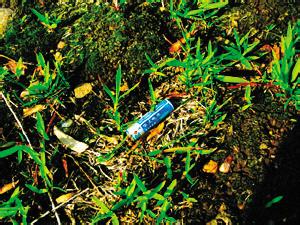
Mercury that is discarded in batteries in nature will slowly overflow from the battery, enter the soil or water source, and then enter the human body through crops, damaging human kidneys. Under the action of microorganisms, inorganic mercury can be converted into methylmercury, which accumulates in the body of fish. After humans consume this fish, methylmercury enters human brain cells, causing severe damage to the human nervous system. The person will be mad. The famous Japanese minamae disease is caused by methylmercury. Cadmium seeps out contaminated land and water, and eventually enters the body and causes damage to the human liver and kidneys. It also causes osteoporosis and severe bone deformation. Car batteries containing acid and heavy metals Leakage of lead into the natural world can cause pollution of soil and water sources, eventually causing harm to humans.
Waste battery pollution and its disposal have become one of the most concerned environmental concerns in the society. According to the relevant personage of the Science and Technology Standards Division of the State Environmental Protection Administration, with the continuous expansion of the type, production, and usage of batteries in China, the number and types of used batteries are also increasing. Used batteries contain mercury, lead, cadmium, nickel and other heavy metals and acid, alkali and other electrolyte solutions, which have different degrees of harm to the human body and the ecological environment. It is understood that among the waste batteries that are harmful to human health and the ecological environment and are included in the hazardous waste control list are: mercury-containing batteries, mainly mercury oxide batteries; lead-acid batteries; cadmium-containing batteries, mainly nickel-cadmium batteries. Although some of China's large-scale battery manufacturers have begun to produce mercury-free batteries, a large number of small and medium-sized enterprises still produce mercury-containing batteries because of their low price, wide application, and large sales volume. Lead-acid batteries are mainly used in automobiles, electric bicycles, communication backup power supplies and emergency power supplies. Nickel-cadmium batteries are commonly used in mobile phones, power tools, and electric toys, and are rechargeable batteries.
Relevant information shows that a battery on the 1st rotten in the ground, can make a 1 square meter of soil permanently lost its value; a coin cell battery can contaminate 600 tons of water, equivalent to the amount of water a person's life. Among the substances that pose the greatest threat to the natural environment, the batteries contain mercury, lead, cadmium, etc. If the used batteries are mixed with garbage or landfilled or discarded, the mercury and heavy metal substances will be exuded. Permeating the soil, contaminating groundwater, entering fish and crops, destroying the living environment of human beings indirectly threaten human health.
Once the human body absorbs these heavy metals, what are the symptoms? According to experts, mercury is a very toxic heavy metal and has a great destructive effect on the human central nervous system. In the 1950s, the shocking Sino-foreign mink disease in Japan was caused by mercury pollution. At present, the mercury content of mercury-containing alkaline batteries produced in China reaches 1%-5%, and the mercury content of neutral batteries is 0.025%. The mercury consumed in China's battery production amounts to tens of tons per year. Cadmium in the human body can easily cause chronic poisoning, the main illness is emphysema, bone softening, anemia, it is likely to make the body paralyzed. The lead is most difficult to excrete when it enters the human body. It interferes with renal function and reproductive function. Experts believe that because the battery pollution has the characteristics of long cycle, large concealment and other characteristics, the potential harm is very serious, and improper handling may cause secondary pollution. According to Dr. Yang Yifu’s introduction, some farmers in a province along the coast of China’s recycling of lead in lead-acid batteries, because of improper recycling and disposal of waste liquids containing lead and sulfuric acid, not only caused lead poisoning, but also prevented the growth of local crops. .
Piezoelectric Ceramic are a ferroelectric compound. This means, that the electro-mechanical conversion process for producing a motion is related a kind of self-enhancement process based on an internal reorganization of the material's structure. This self-enhancement process results in the higher piezoelectrical efficiency of PZT when compared to natural materials like quartz.
Piezoelectric ceramic are generally manufactured from PZT (Pb - lead, Zr - zirconium, Ti - titanium). The PZT- formulation can be varied with a variety of dopants allowing for a broad spectrum of material properties optimized for different application profiles.
Yuhai Company is able to manufacture piezoelectric ceramic elements in a wide range of shapes and sizes. piezoelectric discs, piezo rings, piezo plates, and piezo tubes (cylinders) is the main shapes Yuhai Company most frequently manufactures, we also have a great deal of experience manufacturing hemispheres, trapezoids and other customized shapes.
If the listed shapes and sizes was not the elements you are looking for, please contact us for more information. We can work with you to create the correct shape and size for you.Piezoelectric Elements,Piezo Ceramic Disc,Piezoelectric Ceramic Discs,Pzt Element
Zibo Yuhai Electronic Ceramic Co., Ltd. , https://www.yhpiezo.com